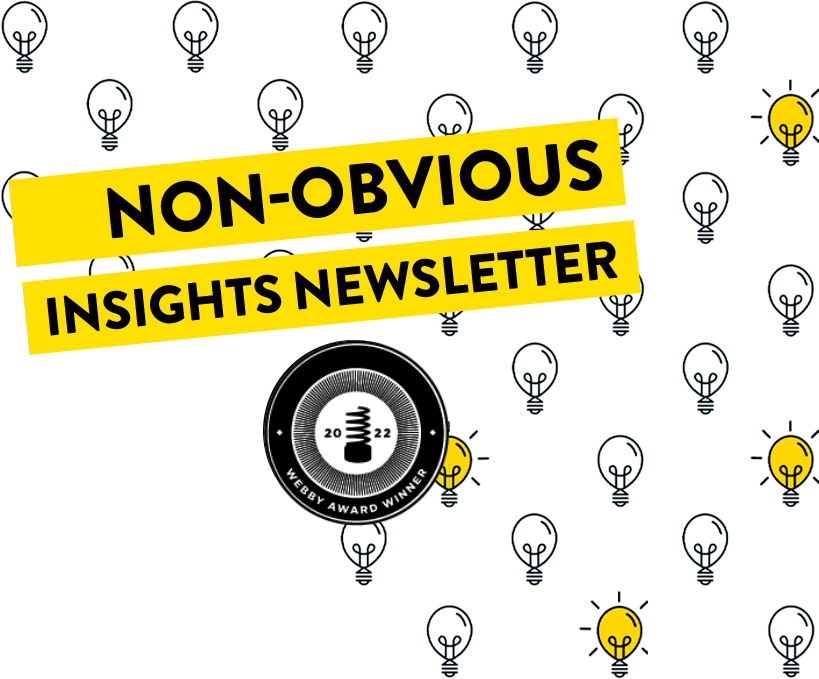Would you still host a meeting if your calendar quantified how much that meeting would cost? What does the new research linking aspartame and cancer tell us? Which country now has the world’s most powerful passport? Does Hollywood really have a nefarious master plan to replace background actors? Do we really need Threads? And what happens when influencer marketing goes horribly wrong? You’ll find all the answers in this week’s edition of the Non-Obvious newsletter below.
Stay curious,
When Influencer Marketing Goes Predictably Wrong
When a fast fashion retailer often criticized for negative environmental and labor track record wants to recast it’s brand image, it is not a good strategy to rely on the vapid commentary of social media influencers enjoying an all-expenses paid junket to your headquarters China. This week, retail giant Shein created their own predictable self-imposed controversy when the influencers they invited to do a factory tour with the hope they would debunk rumors about poor working conditions ended up posting softball observations like the workers “aren’t even sweating” while describing themselves as “investigative journalists.”
Contrast this with the viral story of 93 year old astronaut Buzz Aldrin celebrating the 54th anniversary of the Apollo 11 space mission with a huge breakfast spread … while wearing three watches. It turns out he has been a brand ambassador for luxury watch brand Omega for more than a decade. Here’s a guy who is legendary and loves a product so much he wears two more than any normal person at the same time. This is what great influencer marketing starts with. An influencer who actually believes in and loves a brand for the long term.
These two examples should be companion case studies side by side for marketing teams wondering how to do influencer marketing right. Find ambassadors who really believe in your brand. Let them authentically live their lives with the brand as part of it. And don’t give them a glorified PR tour and expect them to turn it into convincing brand propaganda on your behalf.
New World Cup Ad Challenges Biases Against Women’s Soccer
Women’s soccer isn’t as popular as men’s soccer … and many people believe it’s because the women just don’t play with as much skill, speed or drama as the men. In a timely new ad, telecom giant Orange is challenging that perception by using deepfake videos to superimpose the faces of famous French national men’s team players on the bodies of players from the French women’s World Cup team.
The campaign is inspired by a study from the University of Zurich that found most people judge the quality of men’s and women’s soccer similarly when the gender of players is obscured, but once the gender is revealed — male players are rated more highly. As one of the co-authors of the study concluded, the results of their research “refute the assumption that low demand for women’s professional soccer is based on the quality of the female players’ performances.”
Why Restaurants Might Become the First Major Industry to Embrace Full Workplace Automation
Restaurants, particularly those in the quick service segment, are actively experimenting with automation. This probably isn’t news to you, but analysts believe this may become the first major industry to replace a significant number of jobs with automation. This feels different from the media and entertainment industries, where I personally believe that “Augmented Creativity” will become the norm and talented professionals will continue to use automation tools to be more productive and creative.
In the quick-service restaurant space, automation is likely to offer a more complete replacement of many jobs. Nearly all the major brands are experimenting with AI and robotic solutions. One fast food executive recently offered this tone-deaf explanation to CNN to explain why this is a priority: “Humans sometimes forget to greet people, they forget, they make mistakes, they don’t hear as well … a machine can actually have a consistent greeting and remain calm under pressure.”
Perhaps the biggest factor driving this investment, though, is the reality of the job market and a dramatic shortage of workers. The fact is, interest in food industry jobs is at a historic low and many open jobs remain unfilled. With no signs of this shift reversing, it’s likely many of the restaurants where customer service is a lower priority than cost savings or speed of service will be the first ones to trial automation … and provide case studies that every other industry will be watching with interest.
How the Nintendo NES Game Console Changed the World
| Yes, I am part of the generation that grew up with the original Nintendo gaming system … and sometimes I even feature it in my keynote talks. This year is the 40th anniversary of the console and my fellow geeks over at Engadget have put together an illuminating history of exactly why this system was so formative in the world of gaming for generations to come. To start, it was the first console that introduced the D-pad instead of using a joystick … a design choice that has been copied by almost every gaming system since. Their early choice to create a licensed ecosystem for third party games ensured that the games that were allowed for the Nintendo all met a certain quality standard. They also enabled exclusive game releases, allowed you to save your progress within a game and had the first recognizable gaming mascots like Super Mario. Of course, the gaming system is a nostalgic delight for those of us who grew up playing the game. But the NES also shaped the future of how we play video games more than any other system. So it’s a part of history too. |
How to Bring Nature Indoors to Improve Your Health
| In The Future Normal, one of the most hopeful chapters we wrote centered on the idea of “Ambient Health” — a future where homes and office buildings are constructed to prioritize boosting your health. Recently in the Washington Post there was a feature on the related idea of bringing nature indoors to improve our overall well being. The practice of “biophilic design” uses the principles of nature to create a more livable environment where you might spend time indoors. The scope of this industry is vast, incorporating interior design, smells, textures, sounds and art. As it grows, there will be more opportunities for health care givers, visual artists, designers, furniture manufacturers, musicians, home builders and many others to earn their own slices of the industry. In addition, expert firms like The Well Home – a group we wrote about in the book – will help navigate the rest of us to create optimized living spaces. If you’re a fan of emerging trends, this is one to watch. |
| Every week I always curate more stories than I’m able to explore in detail. Instead of skipping those stories, I started to share them in this section so you can skim the headlines and click on any that spark your interest: Shopify’s ‘Cost Calculator’ Exposes the Price of (Probably Pointless) Meetings Why YIMBY Righteousness Backfires Babies ‘R’ Us Returns to the U.S. with Flagship Store at American Dream What You Need to Know About Aspartame and Cancer Singapore Topples Japan In Ranking of Most Powerful Passports We Don’t Need Threads, We Need A Break Striking SAG Actors in Disbelief Over Studios’ Dystopian AI Proposal |
How are these stories curated?
Every week I spend hours going through hundreds of stories in order to curate this email. Looking for a speaker to inspire your team to become non-obvious thinkers through a keynote or workshop? Watch my new 2023 speaking reel on YouTube >>
Want to share? Here’s the newsletter link:
https://mailchi.mp/nonobvious/379?e=[UNIQID]
This Non-Obvious Insights Newsletter is curated by Rohit Bhargava. | View in browser
Copyright © 2023 Non-Obvious, All rights reserved.
Get this newsletter directly in your inbox every Thursday! Subscribe here >>





